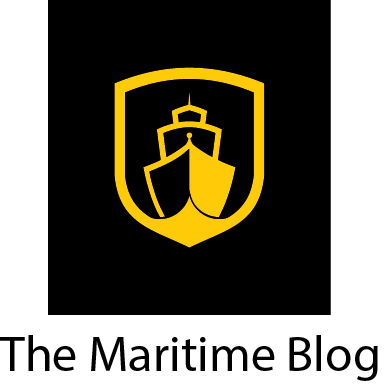search the site
Gard 2022 Results – a deeper dive
Gard 2022 Results – a deeper dive
By admin On In Insurance Marine News, Keep, Marine Hull, Marine Liability, Results
The decision by Gard to move from a “P&I Club” year from February 21st to February 20th (still the financial year adopted by the vast majority of the 12 Group Clubs) to a calendar year (January 1st to December 31st) for the year 2022 makes any year-on-year comparisons difficult. Even “extending” the year to February 20th 2023 will not give a completely accurate assessment, as the insurer will have acted in those seven weeks as if it were at the start of a new financial year, not at the end of an old one.
Gard’s move was not surprising, although it does bring a degree of existentialism into financial accounting – not a coupling one sees often. However one might describe it, the move by Gard away from the traditional P&I accounting year will be seen by outsiders as a self-identification that is closer to that of a marine insurer than it was when the financial year was from February to February.
Gard P&I had (as of December 31st 2022) 266m gt of vessels insured with the mutual for P&I, and 128m gt of vessels insured with Gard AS for Hull & Machinery.
That was distributed as follows
| P&I Mutual Type | million GT | % | H&M | million GT | % |
| Bulk | 85 | 32% | 37 | 29% | |
| Tanker | 80 | 30% | 35 | 27% | |
| Container | 48 | 18% | 36 | 28% | |
| Gas Carrier | 23 | 8.6% | 10 | 7.8% | |
| General Cargo | 15 | 5.6% | 5 | 3.9% | |
| Cruise/Passenger/Ferry | 8 | 3% | 3 | 2.3% | |
| Offshore | 6 | 2.3% | 1 | 0.8% | |
| Other | 1 | 0.4% | 1 | 0.8% |
The combined ratio for P&I was 92%, while for M&E it was 66%. For Gard as a whole the Estimated Total Call (ETC) CR was 81%, down from 94% the previous year (February to February) and 104% the year before that.
CEO Rolf Thore Roppestad said that the year “impacted us both operationally and financially, just as it did for our Members and clients. The war in Ukraine has had a massive impact on global trade, the energy landscape, and on financial markets”. He said that “for Gard, the most imminent challenge has no doubt been the rapidly evolving sanctions regime. Our top priority has been to provide guidance and clarity for our Members and clients in a complex and often fast-changing environment. It has not always been straightforward, but we have seen great value in keeping a close dialogue with relevant stakeholders, including regulatory authorities across different jurisdictions. This has helped to reduce ambiguities along the way, and hopefully also helped to build understanding around the nature of shipping and marine insurance.”
Roppestad noted that one of the unintended side-effects of the sanctions regime against Russia, following on as it did from sanctions against oil-producing majors Iran and Venezuela, was an “increasing regionalization and fragmentation of world markets”, with a growing proportion of the world fleet now operating outside of established and well-tested insurance frameworks. “That means increased risk for people and society. Imagine an oil tanker grounding on your shores, and then you realise that it does not have proper P&I insurance. Nobody will be there to help local authorities handle the casualty, nobody will be there to compensate for the losses.”
As will be seen in the figures below, a strong improvement in the combined ratio, driven mainly by a lower level of claims, was nearly all but undone by a negative investment return. Roppestad said that 2022 was an unusual year. “Given our diversified and conservative risk profile, Gard has traditionally been able to hedge against the ups and downs of the financial markets. In 2022, however, all major asset classes went down which is something that has not happened in decades. So, between our insurance results and our investment results, it really was two different worlds”.
Chairman Morten Høegh said that it had “certainly been an extraordinary year for financial markets – there was nowhere to hide, really. But for Gard, being predominantly invested in bonds, there is also a silver lining in all of this: with rising interest rates going forward, our future expected returns will only improve. As a consequence, Gard’s capital position has actually been strengthened.”
The net return on investments for the year was -6.3%. NAV as of the end of 2022 was $2,263m, down from $2,227m the previous year.
Gard noted that 2022 had been “an extraordinary year for everyone in the financial markets. In contrast to most years, where investors are usually able to offset volatility in the stock market with more stable returns from bonds, this year, values have gone down across the board”. The bonds market had seen its worst year “in generations”. Gard said that, while the reasons for the market decline were many, the main driver had no doubt been the reemergence of inflation and the subsequent rapid increase in interest rates. Geopolitical tension and turbulence had further impacted markets. For Gard this meant that investment results for the 2022 financial period were down across all assets, although the alternatives portfolio saw a slight gain.
The net return of minus 6.3% compared to minus 6.9% in Gard’s strategic bench – mark index. Gard has the majority of its investments in dollar-denominated assets, which strengthened over the period compared to other currencies.
“There is no doubt that the financial turmoil of 2022 has had deep and long-lasting effects on the wider economy. Looking ahead, the main question is of course how long it will take for inflation to normalise. The volatility we currently see in the financial markets will likely remain high for some time to come”, Gard concluded.
Development of GWP ($m) at Gard
| Division | 2019 | 2020 | 2021 | 2022 | 2022 (Feb to Dec) |
| P&I | 519 | 519 | 505 | 534 | 612 |
| M&E | 279 | 354 | 417 | 502 | 383 |
| Total | 797 | 874 | 922 | 1,036 | 995 |
Full figures for the year:
| $000s 21/02/22 to 31/12/22 | Parent company | Consolidated Accounts | ||
| Technical Account | ||||
| GWP | 417,989 | 369,265 | 972,105 | 1,016,888 |
| Gross earned premium | 363,195 | 365,601 | 981,503 | 964,560 |
| Ceded reinsurance | (259,604) | (239,930) | (229,875) | (201,859) |
| Earned premium for own account | 103,591 | 125,671 | 751,629 | 762,702 |
| Other insurance related income | 625 | 2 | 1,611 | 690 |
| Gross incurred claims | 257,734 | 306,239 | 540,055 | 684 877 |
| Reinsurers’ share of gross incurred claims | (120,991) | (159,437) | (13,054) | (55,849) |
| Claims incurred for own account | 136,743 | 146,802 | 527,000 | 629,028 |
| Acquisition costs | 14,635 | 16,014 | 43,120 | 43,723 |
| Agents’ commission | 22,669 | 23,990 | 64,933 | 66,675 |
| Commission received | (41,749) | (45,345) | (23,477) | (12,496) |
| Insurance related expenses for own account | (4,445) | (5,341) | 84,577 | 97,902 |
| Other insurance related expenses | 3,374 | 3,566 | 11,365 | 11,434 |
| Technical result | (31,457) | (19,353) | 130,299 | 25,029 |
| Non-technical Result | (19,987) | 4,239 | (149,308) | (4,715) |
| Total comprehensive income/(loss) | (36,317) | (12,417) | (17,830) | 15,345 |


















